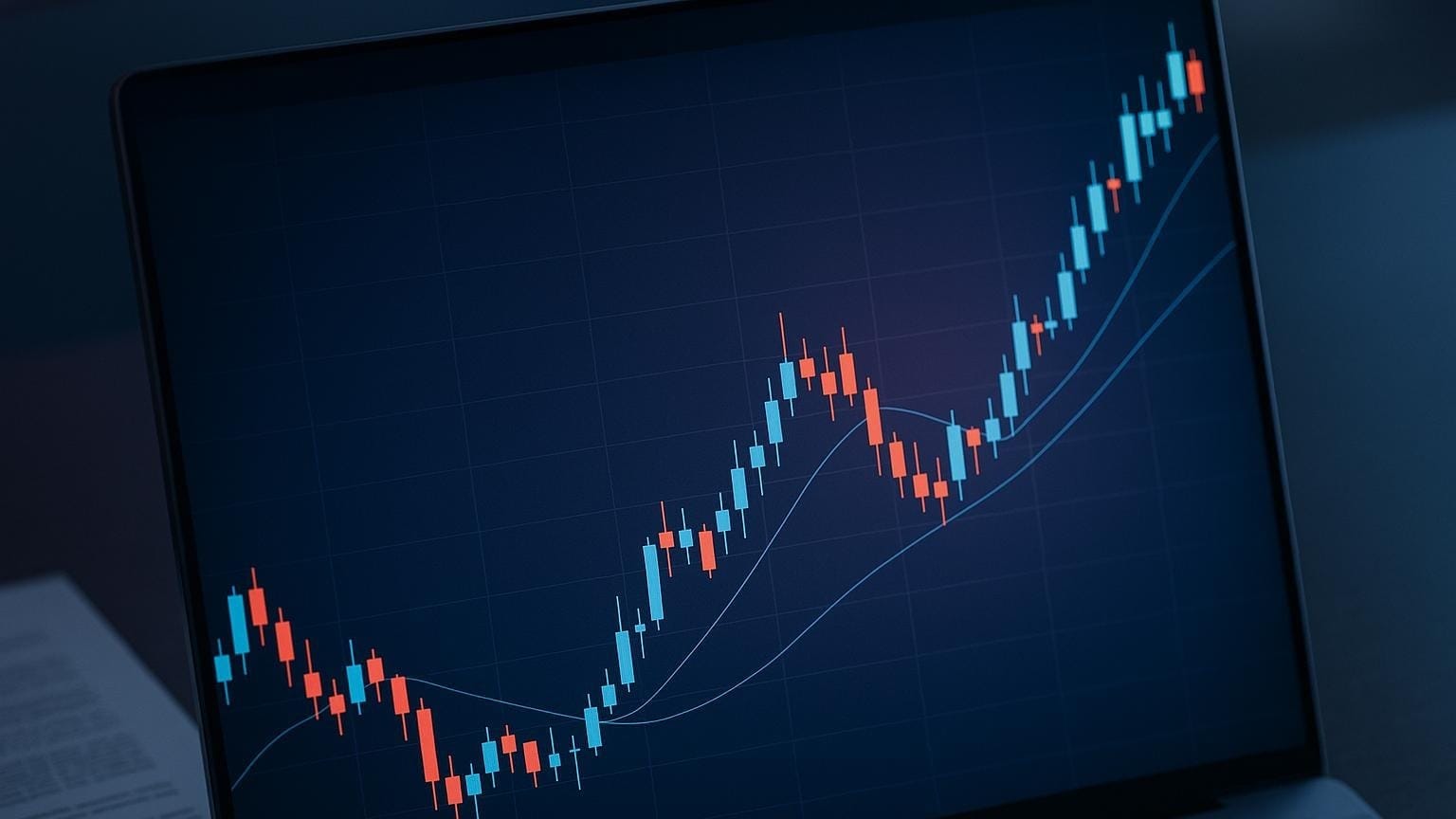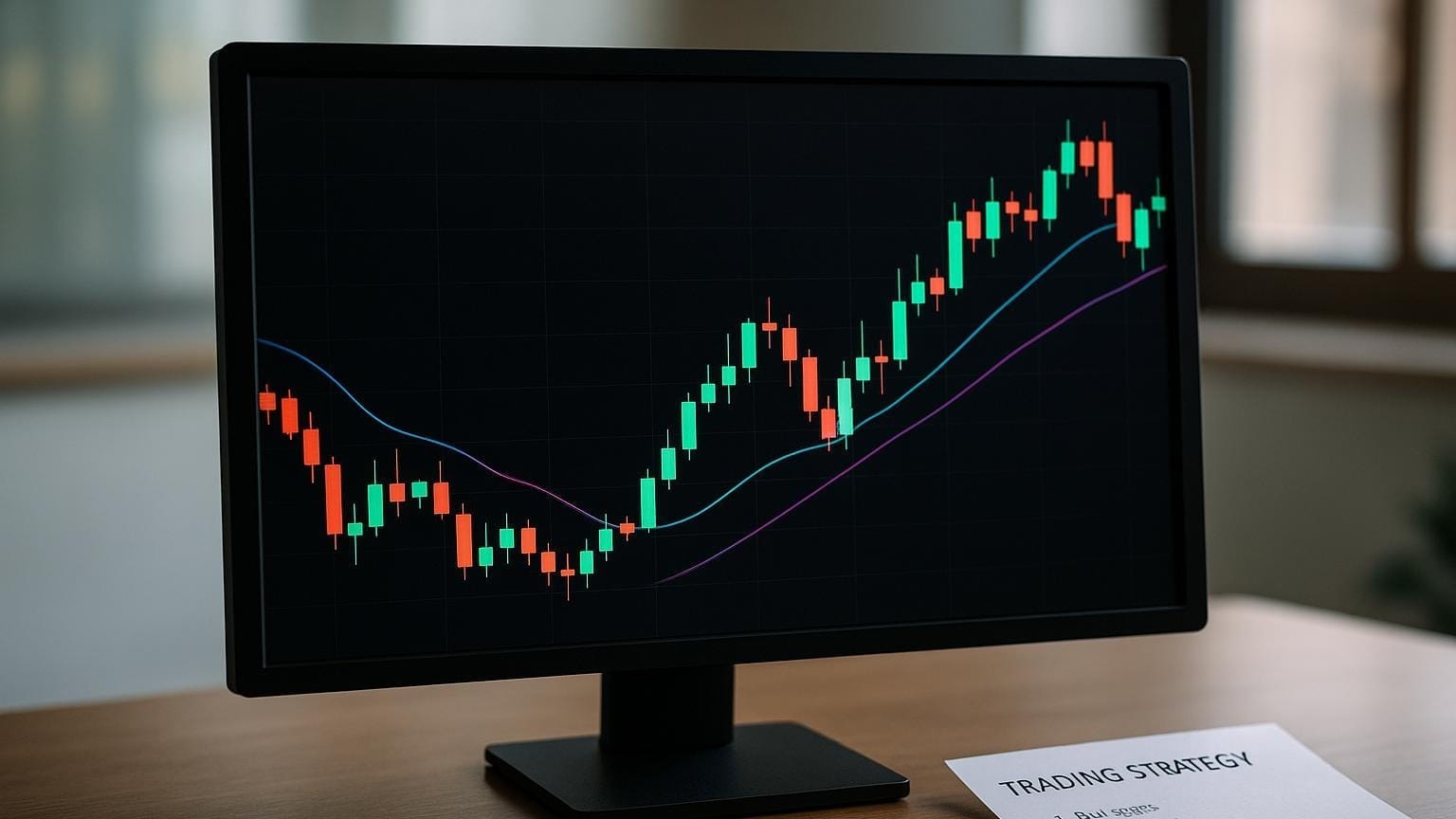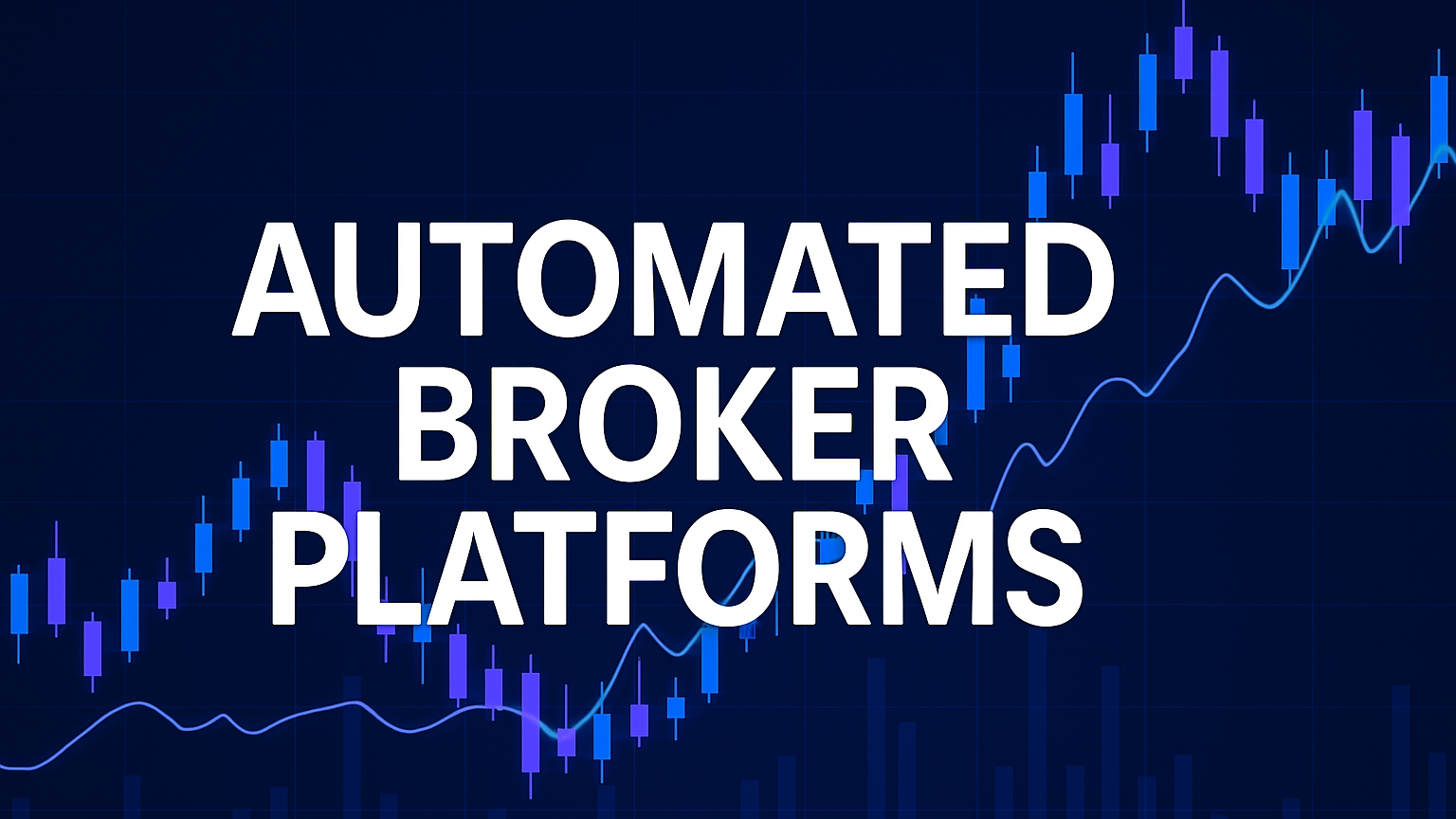Learn to build your first trading bot from scratch with this step-by-step guide, covering strategy design, development, testing, and launch.
Want to automate your trading? This guide breaks down how to build your first trading bot, even if you’re a beginner. Trading bots are software tools that execute trades automatically based on predefined strategies. They trade 24/7, avoid emotional decisions, and process data faster than humans, but they still require careful planning, setup, and monitoring to succeed.
Here’s what you’ll learn:
- Basics: How trading bots work, their pros and cons, and simple strategies like trend following, moving averages, and scalping.
- Development Setup: Choose a programming language (Python is beginner-friendly), install necessary tools, and set up your coding environment.
- Strategy Design: Define trade rules, use indicators (e.g., RSI, Bollinger Bands), and implement risk controls like stop-losses and position sizing.
- Testing: Backtest your bot with historical data, evaluate performance metrics like win rate and drawdown, and refine your strategy.
- Launching: Host your bot on platforms like AWS or VPS, configure live trading, and monitor performance with real-time alerts.
Quick Comparison: Trading Bot Pros and Cons
| Aspect | Advantages | Disadvantages |
|---|---|---|
| Operation | Trades 24/7, fast execution, multi-account | Risk of technical failures, setup complexity |
| Decision Making | Removes emotions, ensures consistency | Cannot adapt to new market conditions |
| Risk Management | Automated stop-losses, precise position sizing | Vulnerable to hacks, market-volatility risks |
1. Trading Bot Basics
Trading Bot Functions
Trading bots are software tools designed to automate trading decisions using market data and preset algorithms. They process real-time data like price, volume, and trends to execute trades quickly and accurately.
The main role of a trading bot is to combine data analysis with your predetermined rules. When market conditions meet your criteria, the bot automatically places trades through your linked exchange account. This automation ensures trades are executed consistently, avoiding the delays often associated with human decision-making.
Basic Trading Strategies
Starting with simple, proven strategies is a smart way to build your first trading bot. Here are three key approaches:
Trend Following
This strategy focuses on capitalizing on established market trends and waiting for clear shifts before acting.
Moving Average Signals
Here’s an example of a straightforward moving average strategy:
- Entry: Buy when the 50-period simple moving average (SMA) moves above the 100-period SMA.
- Exit: Sell when the 100-period SMA moves above the 50-period SMA.
- Stop Loss: Set at 2%, based on recent market volatility.
Scalping
Scalping aims to profit from small price changes through frequent trades. While it can be profitable, this method demands strong risk management and careful position sizing due to its fast-paced nature.
Pros and Cons
| Aspect | Advantages | Disadvantages |
|---|---|---|
| Operation | - Trades 24/7 - Executes trades in milliseconds - Manages multiple accounts at once |
- Technical failures can lead to incorrect trades - Can be complex to set up |
| Decision Making | - Removes emotional bias - Ensures consistent strategy execution |
- Lacks emotional adaptability - Risk of over-optimization |
| Risk Management | - Automated stop-losses - Precise position sizing |
- Susceptible to hacks - Losses possible during market volatility |
While trading bots bring the advantage of automation, they aren’t a “set-it-and-forget-it” solution. Regular monitoring and adjustments are essential to ensure your bot performs as expected. Its success depends on the quality of your strategy and risk management. With these basics covered, you’re ready to move on to setting up your development environment in the next section.
2. Development Setup
Pick Your Code Language
For trading bot development, Python is often the go-to choice, especially for beginners. Its large library ecosystem and active community make it a solid option for implementing trading strategies. Plus, Python’s popularity in this field is supported by a wealth of open-source code shared on platforms like GitHub.
If Python doesn’t suit your needs, other programming languages might be better depending on your goals:
| Language | Best For | Key Advantage | Notable Feature |
|---|---|---|---|
| Python | Beginners & Data Analysis | Extensive Libraries | Simple Syntax |
| Java | High-Frequency Trading | Reliability | Strong Performance |
| C++ | Professional HFT | Speed | Memory Control |
| R | Statistical Analysis | Data Visualization | Research Focus |
| Go | Modern Development | Balance | Good Performance |
Once you’ve chosen your language, the next step is setting up the necessary tools.
Required Software
If you’re working with Python, make sure you install these essentials:
- Python Environment: Download and install Python 3.9 or later.
- Package Manager: Use pip to manage and install dependencies.
- Core Libraries:
- Pandas: Perfect for managing and manipulating data.
- NumPy: Useful for handling numerical computations.
Code Editor Setup
The right IDE can make your development process much smoother. Here are three popular options:
- Free and lightweight.
- Excellent support for Python extensions.
- Built-in Git integration.
- Remote container extension for isolated environments.
- Tailored specifically for Python development.
- Offers advanced debugging tools.
- Includes a robust testing framework.
- Features intelligent code suggestions.
- Ideal for interactive development.
- Enables real-time data visualization.
- Perfect for testing trading strategies.
- Combines code, notes, and results in one place.
When using an IDE like VSCode, make sure to select the correct virtual environment. For example, use the “Python: Select Interpreter” command to ensure everything runs smoothly. With your tools and environment set up, you’re ready to dive into building your trading strategy in the next section.
3. Build Your Strategy
Trade Rules
For a trading bot to perform well, it needs clear rules based on technical indicators. These rules guide the bot’s decisions when entering or exiting trades.
Here’s how different indicator combinations can generate trading signals:
| Indicator Combination | Buy Signal | Sell Signal | Risk Level |
|---|---|---|---|
| RSI + Bollinger Bands | RSI < 30 AND BB% < 0 | RSI > 70 AND BB% > 100 | Moderate |
| Moving Averages | Short MA crosses above Long MA | Short MA crosses below Long MA | Low |
| MACD + RSI | MACD crosses up AND RSI < 40 | MACD crosses down AND RSI > 60 | High |
Using multiple indicators together helps reduce false signals. For example, on 3Commas, you can configure your bot to execute trades when RSI-14 drops below 30 and Bollinger Bands percentage is below 0. These combinations create a foundation for reliable trade signals and better risk management.
Risk Controls
“Risk management is an essential but often overlooked prerequisite to successful active trading.”
To protect your capital, use these key risk control measures:
- Position Sizing: Limit each trade to 1-2% of your total capital. This minimizes potential losses from any single trade.
- Stop-Loss Implementation:
- Individual stop-loss: Set it at 2-5% below the entry price.
- Portfolio stop-loss: Cap your maximum drawdown at 15% from peak equity.
- Trailing stops: Adjust stop-loss levels as prices move in your favor.
- Volatility Filters: Temporarily pause trading during extreme market conditions, such as:
- When the VIX index exceeds a preset threshold.
- Asset price movements surpass 2 standard deviations.
- Bid/ask spreads widen significantly.
Incorporate these parameters into your bot’s code to ensure consistent and disciplined execution.
Strategy Code
When coding your strategy in Python, focus on three main components: analyzing data, generating signals, and executing trades.
class TradingBot:
def __init__(self, initial_portfolio_value):
self.position_size = 0.02 # 2% of portfolio per trade
self.max_drawdown = 0.15 # 15% maximum drawdown
self.portfolio_value = initial_portfolio_value
def calculate_signals(self, data):
# Compute indicators
data['RSI'] = calculate_rsi(data['close'], period=14)
data['BB_percent'] = calculate_bb_percent(data['close'])
# Determine buy signal
return (data['RSI'] < 30) & (data['BB_percent'] < 0)
def check_risk_limits(self, position):
# Halt trading if drawdown exceeds limit
return position.unrealized_pnl / self.portfolio_value >= -self.max_drawdown
This modular setup ensures that your bot adheres to the defined trading rules and risk controls. It’s also ready for thorough testing in later stages.
Build Your First Python Trading Bot: Step-by-Step Tutorial for Beginners
4. Market Data Setup
To move forward with your development setup, having well-configured data feeds is a must.
Choose Data Sources
Pick your data sources based on their reliability, speed, and pricing:
- Binance: Offers a free Spot Trading API with a high-speed matching engine, ideal for low-latency trading and historical analysis.
- Coinbase Data Marketplace: Provides detailed historical market data with a usage-based pricing model.
- Alpaca: Features an easy-to-use API, full market history, and competitive pricing.
Connect to Data Feeds
Secure your API credentials before connecting to data feeds:
config = {
'api_key': 'your_api_key',
'api_secret': 'your_secret_key',
'endpoint': 'wss://stream.binance.com:9443/ws'
}
Set up a WebSocket connection to receive real-time updates:
async def connect_to_stream():
async with websockets.connect(config['endpoint']) as websocket:
subscribe_message = {
"method": "SUBSCRIBE",
"params": ["btcusdt@trade"],
"id": 1
}
await websocket.send(json.dumps(subscribe_message))
Protect your API keys to ensure security. Once connected, you can proceed to gather historical data for backtesting.
Historical Data Setup
Organize historical data by different time intervals:
- Recent: Use 1-minute bars for fine-tuning strategies.
- Medium-term: Analyze 15-minute bars from the past year for validation.
- Long-term: Utilize daily bars to test for consistency over time.
For thorough backtesting:
- Allocate 30% of the data for out-of-sample validation.
- Account for trading costs and spreads to keep simulations realistic.
- Test your strategies under varying market conditions, including trends, range-bound periods, and high volatility.
You can fetch historical data using this function:
def fetch_historical_data(symbol, interval, start_time):
params = {
'symbol': symbol,
'interval': interval,
'startTime': start_time,
'limit': 1000
}
return requests.get(f"{base_url}/klines", params=params)
With these data sources and methods in place, you’re ready to integrate them for detailed backtesting.
5. Test Your Bot
Backtesting Methods
Before deploying your bot in real markets, it’s critical to test it thoroughly. LuxAlgo’s AI Backtesting Assistant can help you evaluate performance across different timeframes and market conditions. Here’s a simple Python framework for backtesting:
def backtest_strategy(historical_data, strategy_params):
results = {
'trades': [],
'profit_loss': 0,
'win_rate': 0
}
for data_point in historical_data:
signal = generate_signal(data_point, strategy_params)
if signal:
trade = execute_trade(data_point, signal)
results['trades'].append(trade)
return calculate_metrics(results)
For effective backtesting, split your historical data into two parts:
- Training data: Use 70% of the data to develop your strategy.
- Testing data: Use the remaining 30% to validate performance on unseen data.
Performance Metrics
Keep an eye on these key metrics to gauge your bot’s effectiveness:
| Metric | Target Range | Description |
|---|---|---|
| Sharpe Ratio | > 1.0 | Evaluates risk-adjusted returns. |
| Maximum Drawdown | < 10% | Measures the largest loss from a peak. |
| Win Rate | > 50% | Percentage of trades that are profitable. |
| Profit Factor | > 1.5 | Compares total profits to total losses. |
Additional metrics to consider include:
- Beta: Compare your strategy’s volatility to the overall market.
- Sortino Ratio: Focuses on downside risk management.
- Average Trade Duration: Ensures trade durations match your strategy’s goals.
These indicators can highlight areas where your strategy may need improvements.
Strategy Adjustments
To improve your bot’s performance while avoiding overfitting, focus on these steps:
- Address Common Issues
- Account for transaction costs and slippage.
- Test your bot in varied market conditions.
- Choose candle periods that align with your strategy.
- Optimize Parameters
- Adjust entry and exit rules, position sizing, and risk management settings to fine-tune your strategy.
- Validate Results
- Perform walk-forward analysis.
- Test your bot across multiple asset pairs.
- Simulate different market scenarios to ensure robustness.
6. Launch Your Bot
Hosting Options
Choosing the right hosting solution is key to your bot’s performance. Options like AWS, Google Cloud, and VPS each cater to different needs.
| Hosting Type | Benefits | Best For |
|---|---|---|
| AWS Lightsail | Flexible pricing, scalable services | High-volume trading |
| VPS | Dedicated resources, reduced latency | Forex trading |
| Google Cloud | Simple setup, strong security features | Beginners |
To optimize performance, select a provider with servers close to your trading exchange. For instance, ForexVPS.net offers specialized VPS plans starting at $28/month, delivering high uptime and responsive support.
Live Trading Setup
Once your hosting is in place, you’ll need to configure your bot for live trading.
Before going live:
- API Configuration: Generate API keys with restricted permissions (trading and portfolio access only). Use IP whitelisting to secure access to specific addresses.
- Forward Testing: Test your bot with real-time market data without placing trades. This helps you confirm your strategy’s effectiveness, data feed reliability, execution speed, and system stability.
Bot Management
Set up real-time alerts to monitor trade executions, position changes, profit or loss updates, errors, and connection issues.
Define key parameters like a daily loss limit, maximum trade size, and an automated emergency stop to halt operations at predefined loss thresholds.
For better reliability and faster execution, VPS hosting is a solid choice. If you’re using AWS, tools like Amazon EventBridge and AWS Lambda work well for low-frequency trading. For near-real-time trading, consider Amazon MSK and Amazon ECS for higher performance.
These steps will help you maintain your bot’s efficiency as it operates and adapts over time.
Next Steps
Your bot is live, now it’s time to fine-tune its performance. Use machine learning to adjust to market trends and maintain profitability.
To make your bot more effective, try these strategies:
| Area | Action | Expected Outcome |
|---|---|---|
| Performance Monitoring | Use monitoring dashboards | Detect anomalies in real time |
| Risk Management | Set dynamic stop-loss limits | Minimize potential losses |
| Strategy Improvement | Add machine learning models | Better response to market shifts |
These steps help you choose the right tools and sharpen your data analysis.
Platforms like TraderBlocks.com can be a good option for hosting your bot. Their cloud-based service includes a user-friendly Block Builder interface. They offer free API access for basic data analysis, but premium data sources may cost over $500/month as your strategy grows.
To refine your trading model, set up automated feedback loops that adjust based on performance. Use cross-validation techniques to avoid overfitting and keep your strategies effective in live markets. Tools such as Zipline or QuantConnect can speed up development while keeping expenses manageable.
Cloud hosting costs will vary, typically ranging from $10 to $100 per month depending on trading volume and frequency. As your bot evolves, think about diversifying across multiple timeframes and markets. This approach not only spreads risk but also opens up opportunities for higher returns. Diversifying in this way strengthens your overall risk management plan.








